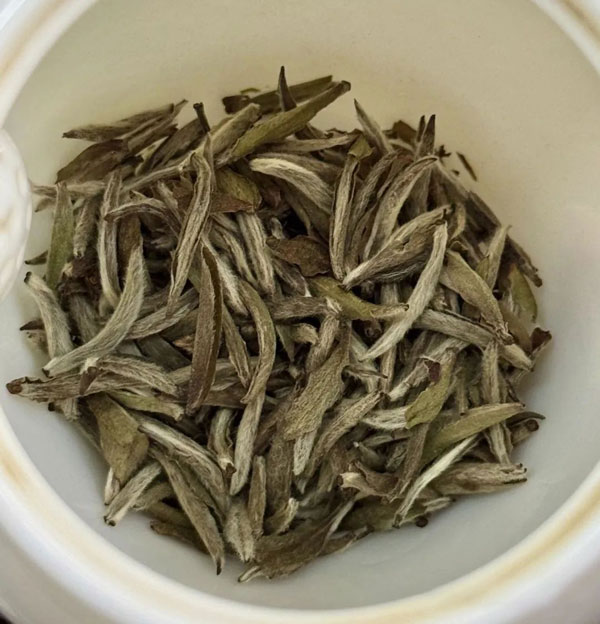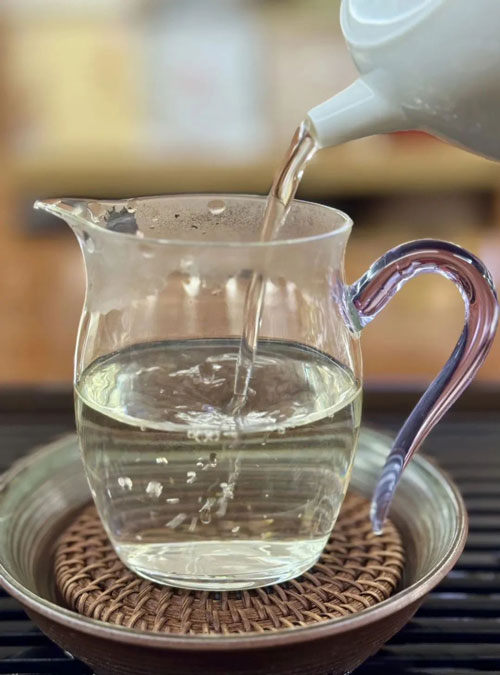There are several common time points in the tasting period of white tea.
1. The tasting period is when the new tea is just made. Although white tea is not like green tea, it basically does not pay attention to "before the Ming Dynasty" or "before the rain", but every year, many consumers have to try the new peony and silver needle tea.
The new white tea in spring is like a teenager, full of youthful vitality, vigorous, refreshing, sweet, and sweet, with advantages and disadvantages at a glance. The tea at this time is suitable for tasting.

2. The tasting period is about 3 to 5 years. At this time, the water taste in the tea fades away. After aging
the transformation, its internal quality gradually settles, the taste tends to be stable, the heavy feeling is enhanced, and the coldness has retreated.
3. The drinking period is about 7 years. After 7 years of aging, the aged flavor of Fuding white tea will slowly appear. The aroma will transform into infinite possibilities over the years. The original floral fragrance will transform into fruit honey fragrance, or the original fragrance was weak, but now it has a rich floral fragrance.

Tea over 10 years old has a warm nature. In the folk customs of Fuding, this old tea is used as medicine to reduce inflammation, reduce fire, nourish the stomach and strengthen the spleen.
As time goes by, the cold nature of white tea gradually fades, and it has a better taste and even health care effects. During this period, the aroma, taste, and soup color will undergo new changes. This is the delightful part. You can witness the color of the tea soup and taste the taste of white tea of different years.

White tea, white peony, and Shoumei, because of the different tenderness of picking, from new to old, provide different dimensions of old tea flavor. If white teas of different years and the same category are collected together, tasted and compared, the different flavors of time will be clearly displayed.
Take high-grade white peony as an example. The new tea of that year was fragrant and sweet, with its own flavor.
One year later, it had a slightly heavier taste and the aroma began to change.
After aging for 3 years, the color of the dry tea began to darken, the soup color changed from the original light yellow to apricot yellow, the aroma began to have a mysterious feeling, and the taste began to be more mellow and sweet.
With the increase of years, the color of the tea and the soup became deeper; after 7 years, the color of the dry tea was close to dark gray-green, the soup color changed from apricot yellow to orange yellow, the soup color was translucent, the taste was mellow and sweet, and its fragrance was more honey and faint floral fragrance, accompanied by a faint aging rhyme, plum fragrance, and even a hint of milk fragrance.

If we take the aging cycle of 7 years as an example:
- The 7-year-old Shoumei will gradually show a variety of aromas such as medicinal fragrance, jujube fragrance, lotus leaf, and rice dumpling leaf;
- The 7-year-old silver needle has the sweetness of rock sugar, and begins to show chocolate and milk fragrance.
In professional terms, we call it the aroma of honey. More importantly, what they show is not a single flavor, but a distinct layer in the elegance, such as the main flavor, the auxiliary flavor, the main flavor, and some flavors are looming.
The various flavors can set off and enhance each other, and continue each other's vitality.
This is the wonder of white tea. What kind of vitality did the weather, phenology, and craftsmen inject into it that year? How did time carve it into a mature flavor?
From clear to soft, it is curious, how did this change happen?
Now it can be explained scientifically.

%20--%3e%3c!DOCTYPE%20svg%20PUBLIC%20'-//W3C//DTD%20SVG%201.1//EN'%20'http://www.w3.org/Graphics/SVG/1.1/DTD/svg11.dtd'%3e%3csvg%20version='1.1'%20id='图层_1'%20xmlns='http://www.w3.org/2000/svg'%20xmlns:xlink='http://www.w3.org/1999/xlink'%20x='0px'%20y='0px'%20width='256px'%20height='256px'%20viewBox='0%200%20256%20256'%20enable-background='new%200%200%20256%20256'%20xml:space='preserve'%3e%3cpath%20fill='%23FFFFFF'%20d='M194.597,24.009h35.292l-77.094,88.082l90.697,119.881h-71.021l-55.607-72.668L53.229,232.01H17.92%20l82.469-94.227L13.349,24.009h72.813l50.286,66.45l58.148-66.469V24.009z%20M182.217,210.889h19.566L75.538,44.014H54.583%20L182.217,210.889z'/%3e%3c/svg%3e)




